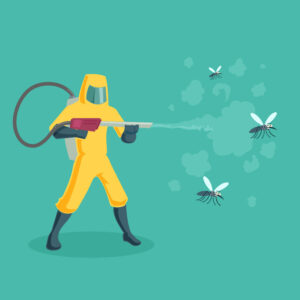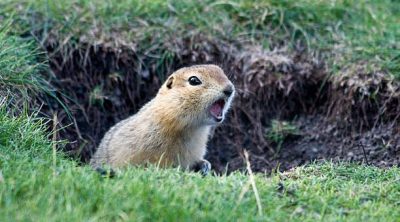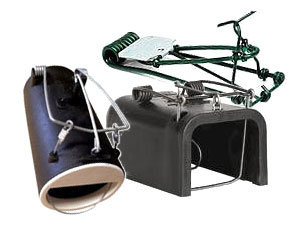Discovering gopher holes in your yard is often the first sign of a potentially damaging infestation. These burrowing rodents can wreak havoc on lawns, gardens, and even underground utilities. Knowing how to properly identify gopher holes and taking swift action can help protect your property from extensive damage and restore your landscape’s appearance.
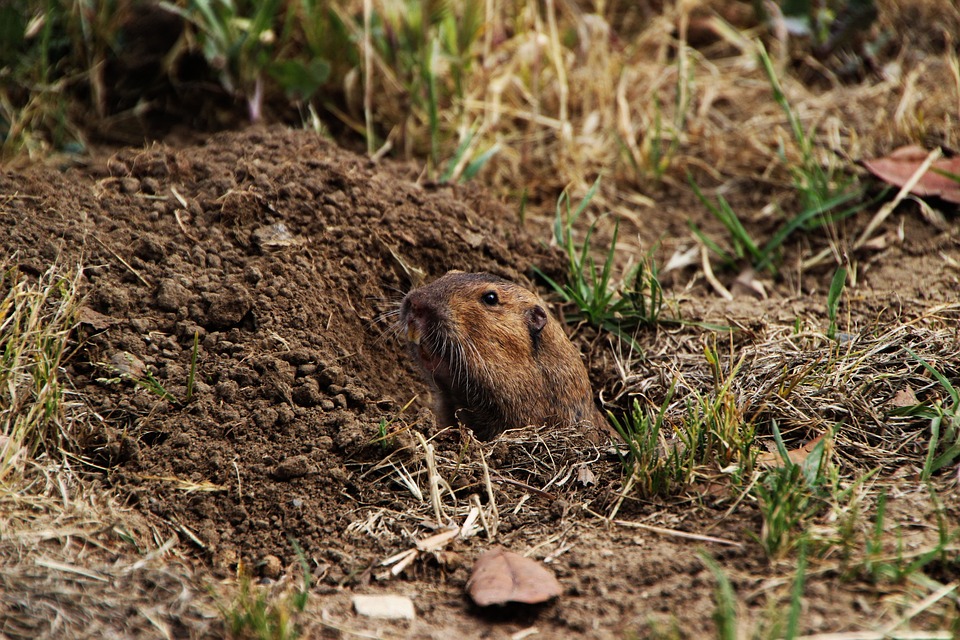
A single gopher can create several mounds daily and develop an underground tunnel system covering 200-2,000 square feet. These tunnels can damage plant roots, underground utilities, irrigation systems, and create hazardous sinkholes. Early identification and intervention are crucial to prevent extensive property damage.
How to Identify Gopher Holes in Your Yard
Correctly identifying which burrowing pest is creating holes in your yard is the crucial first step in effective control. Gophers, moles, and voles all create distinctive tunneling patterns and mounds that can help you determine which creature you’re dealing with.
| Pest | Mound/Hole Characteristics | Tunnel System |
|---|---|---|
| Gopher |
|
|
| Mole |
|
|
| Vole |
|
|
The most reliable way to identify gopher activity is to look for the crescent or fan-shaped mound with a plugged entrance hole. Unlike mole mounds which have a central opening and conical shape, gopher mounds are asymmetrical with the entrance hole typically located to one side and plugged with soil. In addition to the mound shape, an easy way to distinguish gopher activity from that of moles is by examining the type of vegetation around the mounds. Gophers tend to consume a variety of plant roots, leaving behind patches of dead or wilted plants, while moles are insectivores and do not cause the same level of plant damage. This gopher and mole comparison can further assist in proper identification, making it easier for gardeners and landscapers to manage their approach to these burrowing rodents.
Property Damage Caused by Gopher Holes
Gophers can cause extensive damage to landscapes, gardens, and infrastructure through their burrowing activities. Understanding the potential impacts can help you appreciate the importance of prompt control measures. Gopher control is crucial not only for maintaining the aesthetics of your property but also for preserving the health of your plants and soils. In a gopher vs groundhog comparison, it’s important to note that while both are burrowing rodents, their behaviors and habits differ significantly, impacting how they interact with their environment. Effective management strategies should consider these differences to ensure a tailored approach that minimizes damage and promotes a balanced ecosystem.

Vegetation Damage
- Consumption of plant roots and bulbs
- Wilting or dying plants
- Complete disappearance of plants (pulled underground)
- Damaged tree root systems
- Destroyed garden beds and lawns

Structural Damage
- Damaged underground utility lines
- Compromised irrigation systems
- Broken sprinkler pipes
- Chewed electrical wiring
- Undermined building foundations
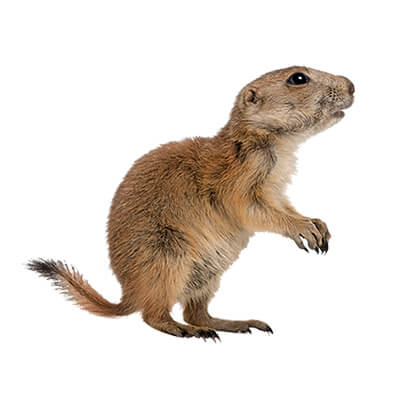
Landscape Damage
- Uneven terrain creating trip hazards
- Soil erosion from tunnel collapse
- Disrupted water drainage patterns
- Formation of sinkholes
- Difficult lawn maintenance
Gopher tunnels can create unsafe conditions in your yard, including trip hazards from uneven ground, sinkholes from collapsed tunnels, and potential flooding from damaged irrigation systems. Addressing gopher infestations promptly helps maintain a safe outdoor environment.
Effective Solutions for Gopher Holes
Once you’ve confirmed that gophers are causing the damage in your yard, several control methods can be implemented. A combination of approaches often yields the best results for long-term gopher management.
Habitat Modification
Make your yard less appealing to gophers by planting species they avoid, maintaining shorter grass, eliminating hiding places, and using raised garden beds with protective barriers underneath.
Physical Barriers
Install underground barriers using hardware cloth or mesh with openings smaller than 1/2 inch. Bury wire baskets around valuable plants and create perimeter barriers at least 2 feet deep and 1 foot above ground.
Natural Repellents
Apply castor oil solutions, predator urine, or plant natural deterrents like marigolds, lavender, rosemary, and daffodils throughout your yard to create an environment gophers find unpleasant.
Step-by-Step Gopher Control Methods
| Control Method | How to Apply | Effectiveness |
|---|---|---|
| Castor Oil Repellent |
|
Moderate (temporary relief) |
| Trapping |
|
High (70-90% success rate) |
| Ultrasonic Repellers |
|
Low to Moderate (30-50% effective) |
| Barrier Installation |
|
High for protected areas (80-90% effective) |
Create a less appealing environment for gophers by incorporating plants they tend to avoid, including marigolds, salvia, lavender, catmint, rosemary, sage, thyme, daffodils, and alliums. These plants contain compounds that gophers find distasteful or irritating, helping to naturally discourage their presence in your garden areas.
When to Call a Professional
- Extensive infestation: Multiple active tunnel systems across a large area
- Failed DIY attempts: Multiple control methods haven’t reduced activity after 2-3 weeks
- Property damage: Evidence of damage to irrigation, utilities, or foundations
- Safety concerns: Large sinkholes or significant terrain destabilization
- Recurring problems: Gophers return seasonally despite previous control efforts
How to Monitor and Maintain a Gopher-Free Yard
After implementing control measures, ongoing monitoring and maintenance are essential to prevent reinfestation and address any returning gophers promptly.
| Monitoring Activity | Frequency | What to Look For |
|---|---|---|
| Yard Inspection | Weekly | Fresh mounds, disturbed soil, or new holes |
| Mound Testing | When new mounds appear | Flatten mounds and check if they’re rebuilt within 48 hours |
| Barrier Maintenance | Monthly | Damage to mesh, erosion around barriers, or breached areas |
| Repellent Reapplication | Every 2-4 weeks | Diminishing effectiveness after rain or time |
| Plant Health | Ongoing | Wilting, yellowing, or disappearing plants |
To verify that gophers have left your property, carefully open several tunnel entrances and mark them. Check these openings daily for 3-5 days. If the tunnels remain open and undisturbed during this period, it’s likely the gophers have moved on or been eliminated. Remember that new gophers may move in if your yard remains attractive to them.
Frequently Asked Questions
How many gopher holes indicate an infestation?
Even a single gopher can create multiple mounds (up to 70 per month), so the number of holes isn’t always an accurate indicator of population size. However, if you observe 5 or more fresh mounds appearing daily across your property, you likely have multiple gophers.
A better indication of population is the distribution pattern. Mounds in distinct, separate clusters typically indicate multiple gophers, as these territorial animals generally maintain separate burrow systems.
Will filling gopher holes eliminate the problem?
Simply filling holes without addressing the gophers themselves is ineffective. Gophers will quickly re-excavate plugged holes or create new ones nearby. Filling holes can be useful as a monitoring technique to identify active tunnels (those reopened within 24-48 hours), but it’s not a control method on its own.
For effective control, you need to remove the gophers through trapping or repellents and then implement preventative measures to discourage new arrivals. Additionally, consider planting gopher-resistant plants in your garden to deter these pests from taking up residence. Researching how to control gophers naturally can also provide you with eco-friendly options, such as using homemade repellents made from castor oil or cayenne pepper. Regularly monitoring your yard for signs of gopher activity will help you stay proactive in protecting your landscape.
Are poisons effective for controlling gophers?
While poisons can be effective at eliminating gophers, they come with significant drawbacks and risks. Poisoned gophers may die in their tunnels, attracting other pests. More concerning is the risk of secondary poisoning to pets, children, and beneficial wildlife like owls, hawks, foxes, and coyotes that may consume poisoned gophers.
If choosing this route, use products specifically designed for gopher control and follow all label instructions carefully. Many experts recommend trapping as a more targeted and environmentally responsible alternative. Additionally, it’s essential to familiarize yourself with the various types of traps available, as some may be more effective based on your specific situation. Consulting best gopher traps reviews can provide valuable insights into the most reliable products and their effectiveness in controlling gopher populations. Always ensure that the traps are placed in active gopher tunnels for the best results and monitor them regularly to assess their efficacy.
Do gophers hibernate or leave during winter?
Gophers do not hibernate and remain active year-round. They may be less active during extremely cold periods but continue to feed and maintain their tunnel systems throughout winter. In fact, their burrowing activity may increase in winter as they extend tunnels in search of food.
Winter can actually be an effective time for control measures, as gophers are more concentrated in their primary tunnels and food sources are more limited.
Can flooding gopher tunnels drive them away?
Flooding rarely eliminates gophers permanently, as their complex tunnel systems often have high points where they can escape rising water. Additionally, many tunnels have emergency exits specifically to escape flooding during rain.
Flooding may temporarily displace gophers, but they typically return once the water recedes. This method also wastes water and can damage your landscape through erosion and oversaturation.
Conclusion
Addressing gopher holes in your yard requires a combination of proper identification, prompt action, and consistent follow-up. By understanding the distinctive characteristics of gopher tunnels and implementing appropriate control measures, you can protect your landscape from extensive damage and restore your yard’s appearance and safety.
For effective gopher control, focus on a multi-faceted approach that includes habitat modification, physical barriers, and either trapping or repellents. Monitor your yard regularly for signs of new activity, especially after control measures have been implemented. Prevention is easier than elimination, so maintain gopher-resistant plantings and barriers even after you’ve resolved an initial infestation.
With persistence and the right combination of techniques, you can successfully manage gopher problems and maintain a healthy, attractive landscape. Remember that complete eradication may not be realistic in areas with high gopher populations, but reducing their numbers and impact to a manageable level is an achievable goal for most homeowners.
